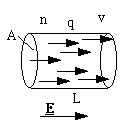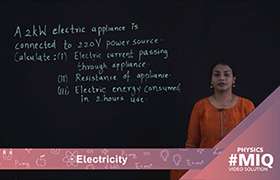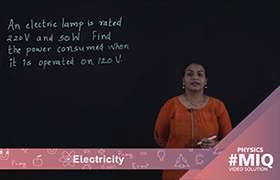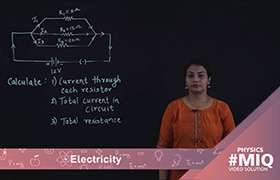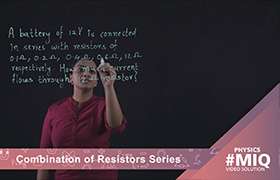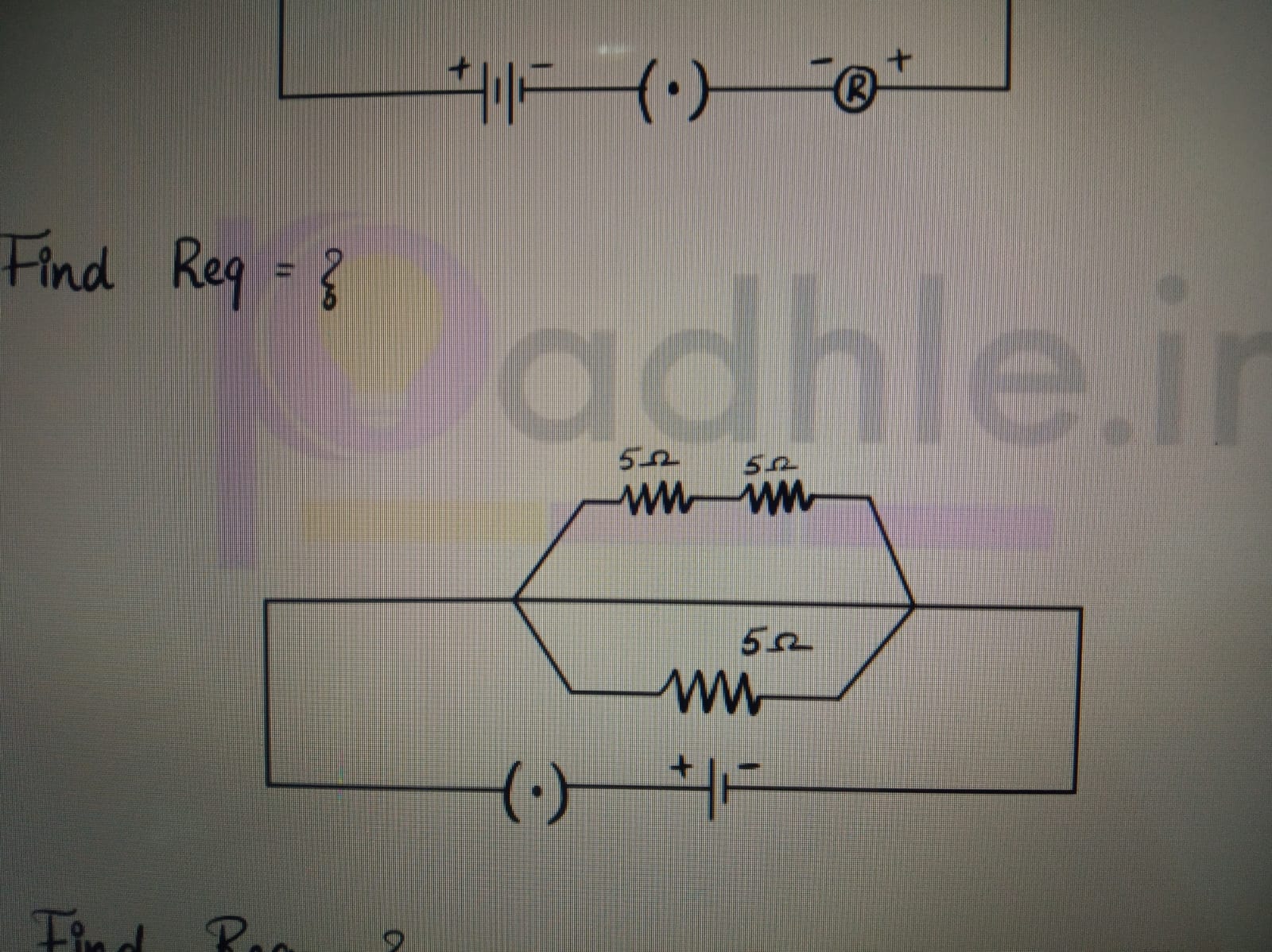CBSE Class 10 Answered
what is ohm's law? Derive it.
Asked by haritsourabhharit | 16 Oct, 2010, 09:22: AM
Dear student
Following is the detailed account of arriving at Ohms law as an equation:
The sketch shows a conductor, length L, cross sectional area A. There are n charge carriers per cubic metre, each carrier having a charge q, and moving at an average speed v. The situation is analogous to the gravitational case except that we have charge q instead of mass m, and an electric field of magnitude E rather than a gravitational field of magnitude g. Inside the cylinder there are nAL charge carriers. The last charge carrier leaves the cylinder after a time t = L/v, so the total charge that leaves the cylinder per unit time is:
I = nAqv = n.A.const.E = const.V.nqA/L. (3)
|
|
-
V/I = (L/A)(1/(nq.const.)), which we can write as
V/I = (L/A)ρ = R
Alternatively, we can take the reciprocal of the terms in the above equation and write:
-
I/V = σ(A/L) = G
-
σ = n.q.const = 1/ρ.
-
J = σE = E/ρ.
This is also the form that is closest to the way in which Ohm expressed his eponymous law originally. The current is parallel to E so in this case the equation has been written in vector form.
We hope that clarifies your doubt
Regards
Team
TopperLearning
Answered by | 18 Oct, 2010, 12:29: PM
Application Videos
Concept Videos
CBSE 10 - Physics
Asked by khajannirwan | 27 Feb, 2024, 10:20: PM
CBSE 10 - Physics
Asked by saanviyadla | 24 Jan, 2024, 07:06: PM
CBSE 10 - Physics
Asked by kamalaranjanmohantymohanty5 | 06 Jan, 2024, 10:05: AM
CBSE 10 - Physics
Asked by nandhikasugumar | 05 Oct, 2023, 04:01: PM
CBSE 10 - Physics
Asked by daniya062008 | 02 Oct, 2023, 08:25: PM
CBSE 10 - Physics
Asked by prassanna.j | 03 Sep, 2023, 12:28: PM
CBSE 10 - Physics
Asked by prassanna.j | 03 Sep, 2023, 12:21: PM
CBSE 10 - Physics
Asked by prassanna.j | 03 Sep, 2023, 12:13: PM
CBSE 10 - Physics
Asked by prassanna.j | 03 Sep, 2023, 12:11: PM

